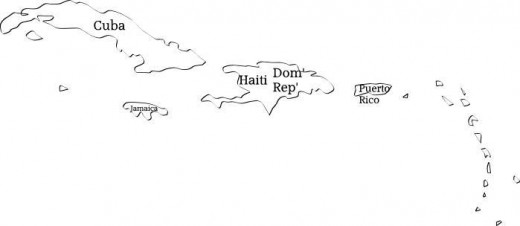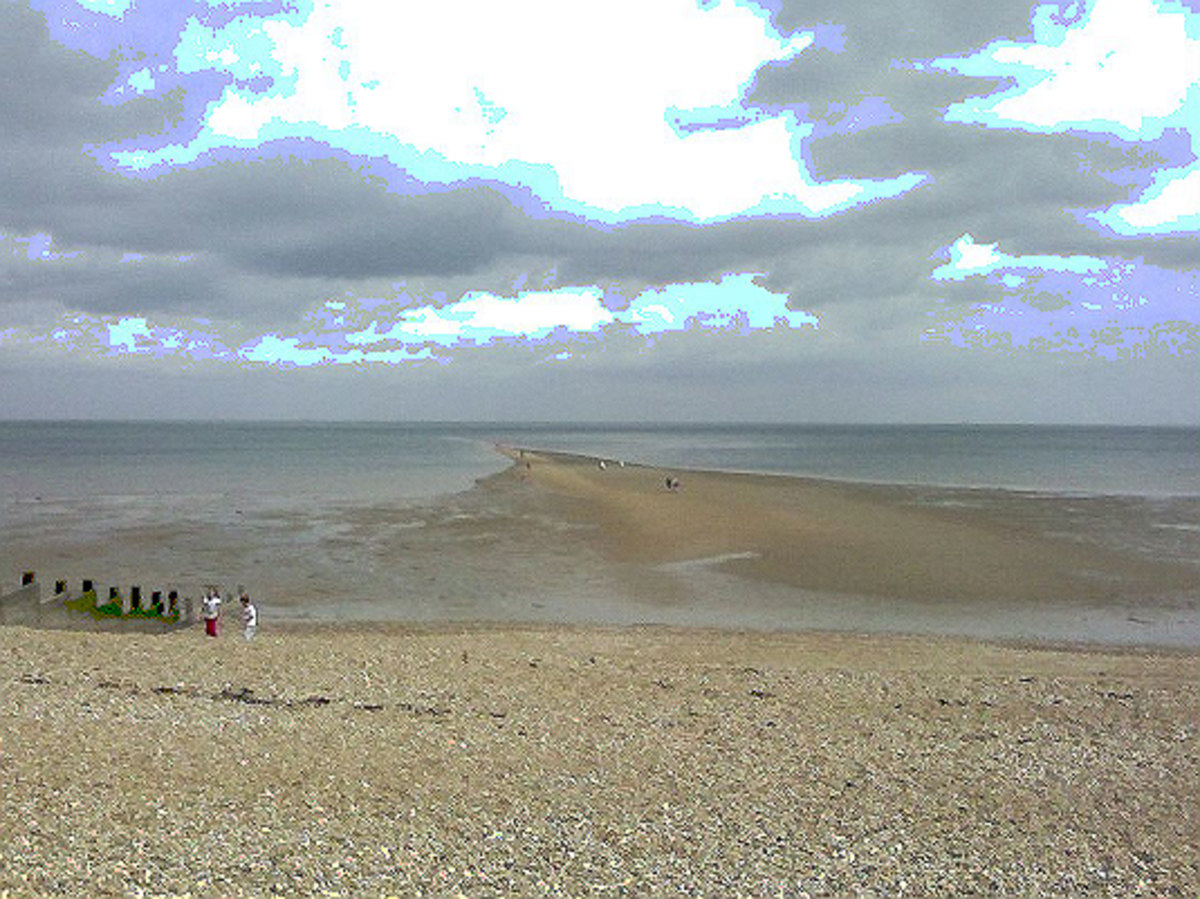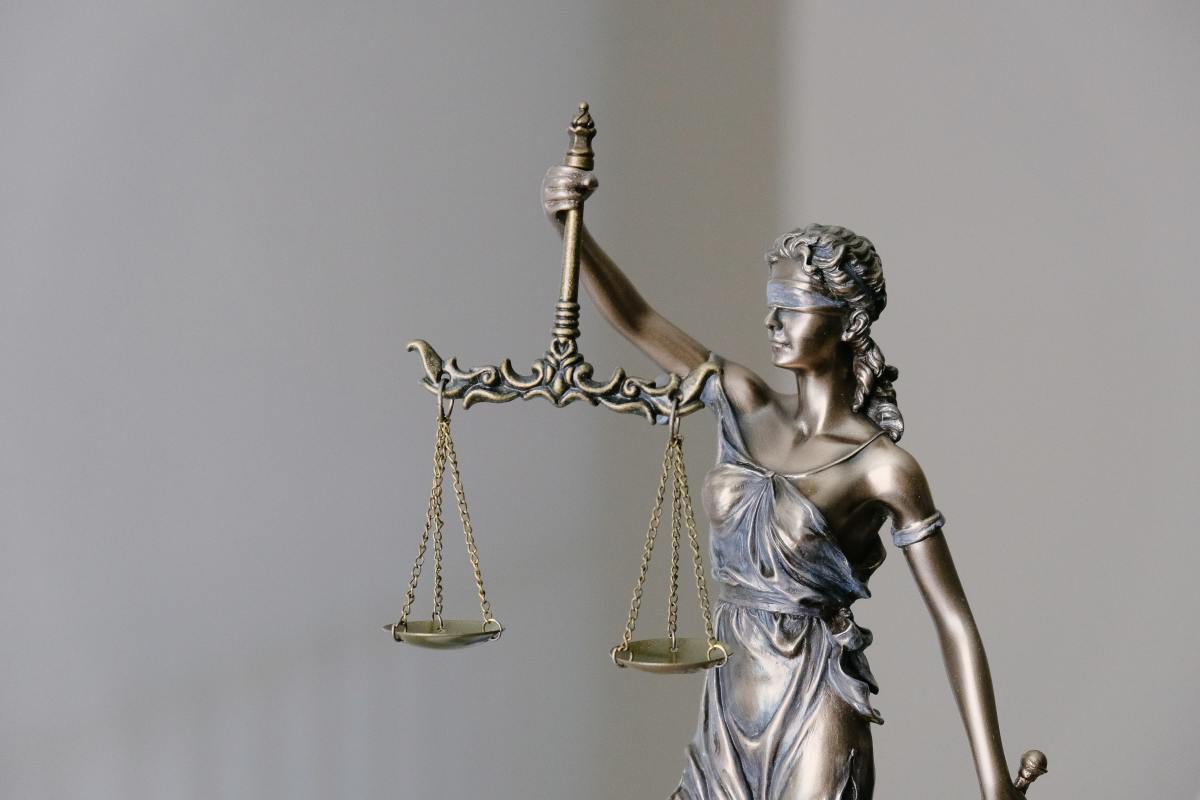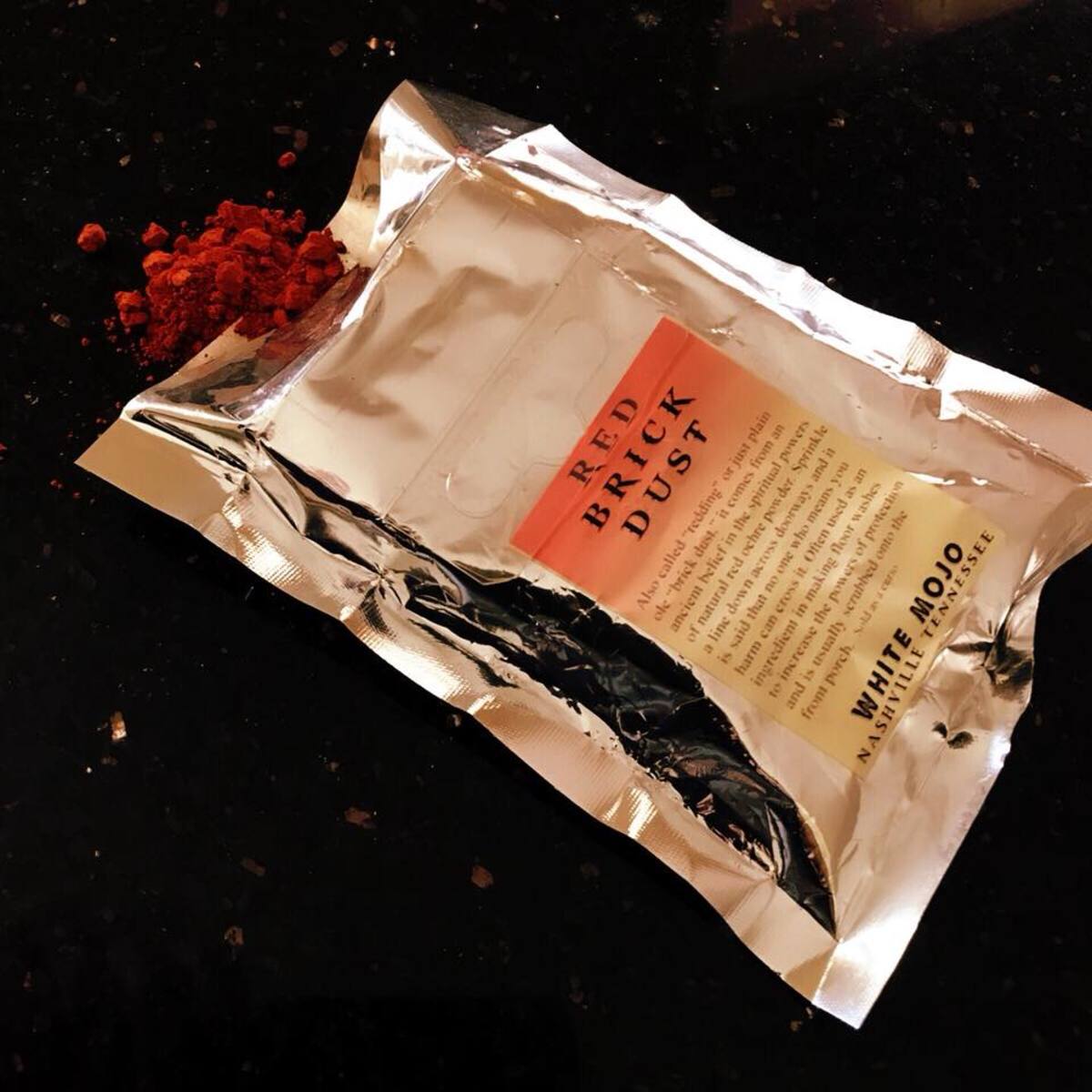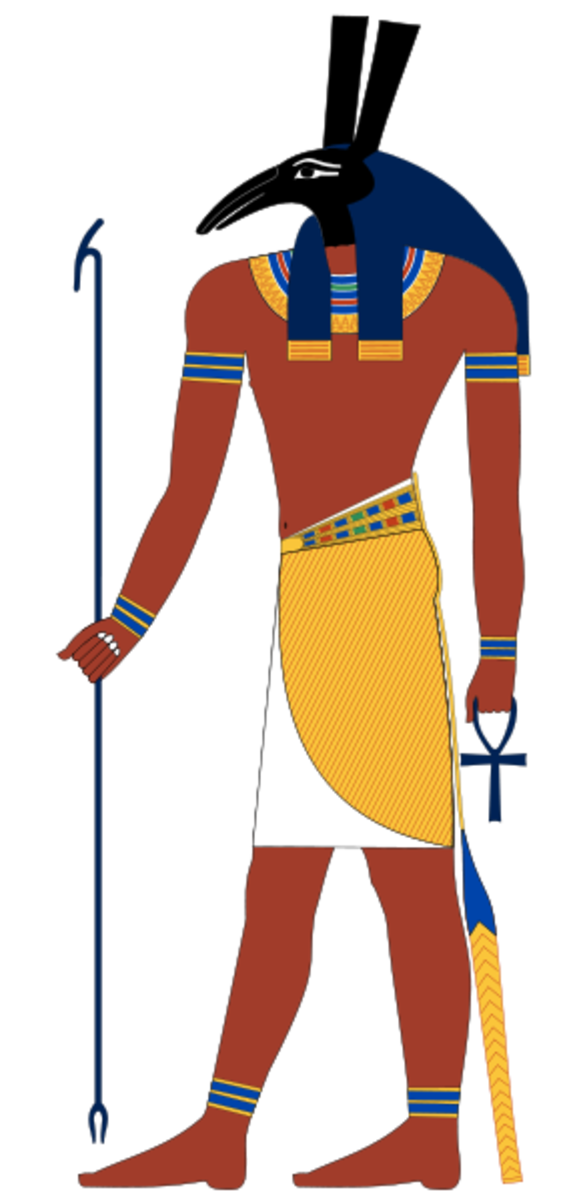The Landcape Zodiac Of Britain part 4
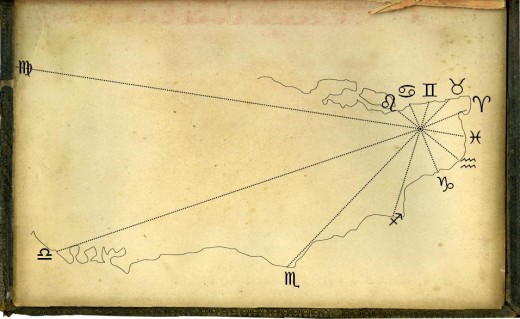
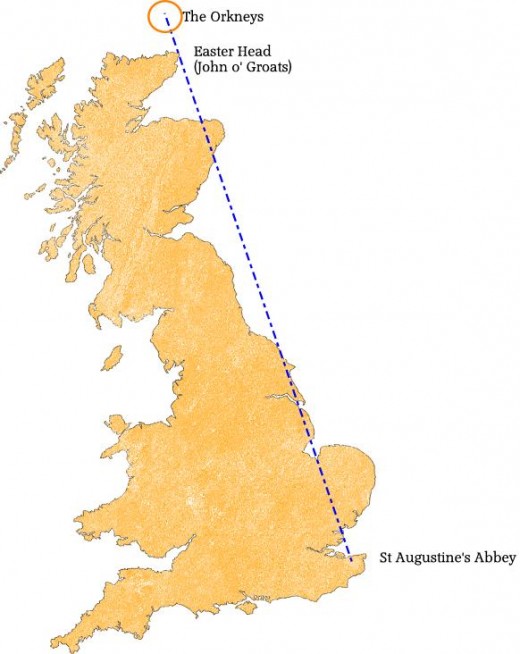
So, this 'ere Landscape Zodiac of the title is pretty big, all things considered. Truth to tell, the shorelines of Britain aren't the edges of it, and why would they be? The thing with wheels (or circles) is that (as some clever bastard once said) the center is nowhere, and the circumference everywhere, or something like that.
But with this wheel it's the reverse situation - it's a circle whose centre is somewhere, and its circumference is nowhere. Because we DO know that its centre is actually in Canterbury - or at least I reckon it is, for the reasons given in the last three articles in this series. But in part two I did at least make an effort to demonstrate how it is with this thing - the Cancerian northward cusp (alignment) refused to behave in an orderly manner and didn't stop where the parochial minded might like it to - at the northern extreme tip of the mainland. As I showed there it just keeps going and going all the way to the magnetic north-pole.
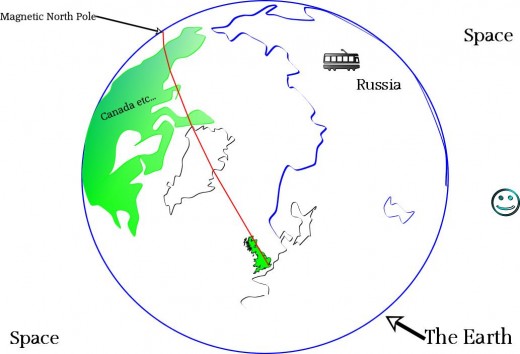
And of course, it doesn't stop there either - it just keeps going all the way around the globe and comes back to Canterbury and the trinity of stones at St Augustine's Abbey from the other and opposite direction - it really does. So, you see what I mean? This circle's circumference is the circumference of the earth, and you can't put-your-hand on that, can you? I mean, you can't point it out with your finger... well I can't anyway.
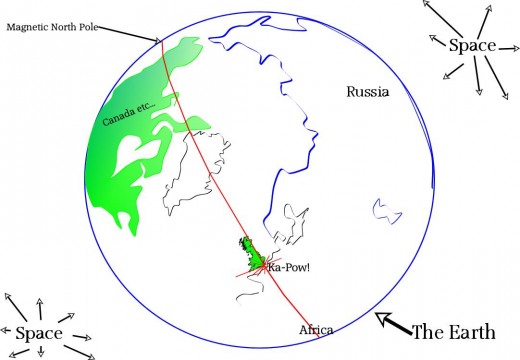
The fact is, this is not only a nation-wide landscape zodiac, it is a globe-wide landscape zodiac!
But the intent of this and following articles is to demonstrate the existence of the British part of the wheel - though the occasional bit of info regarding the global implications of my theory won't hurt. But in these particular articles, we've gotta be focussed on the parts of the zodiac within the coastlines of Britain- otherwise these articles would have to run to a googleplex of issues.
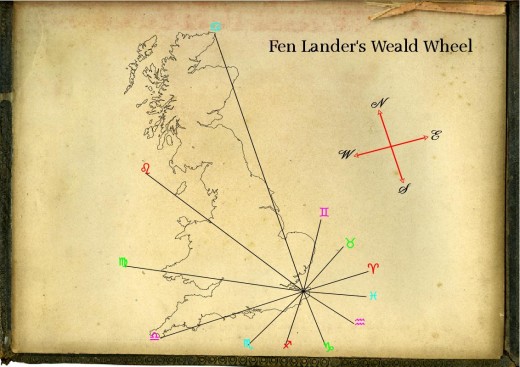
the Ritual Wheel
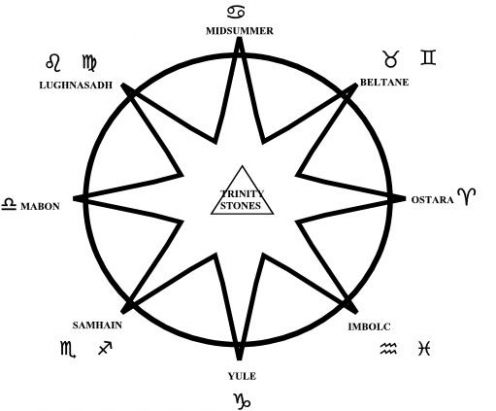
the Cosmos Machine
Ancient man discovered all of the astronomical alignments in this zodiac and 'enhanced' the naturally occurring features in the landscape in order to, I think, 'assist the 'gods' in their handi-work - help the cosmos-machine to work better.
And, given the truly gargantuan projects they often carried-out, barely batting an eye at moving hundred ton boulders hundreds of miles across mountains, rivers, forests and seas... like they did to build Stonehenge for example.
So, within this Landscape Zodiac that encompasses the entire country (!) and the world (!!!), as you may imagine, many of the landscape enhancements the ancients worked on to improve the zodiac's functionality - were truly, truly BIG. Some so BIG we mistake them for 'natural-features,' like The Street Of Stones at Whitstable.
But, there are many we now know are man-made - Silbury Hill for example. I suspect that the Romans and other ancient explorers/tourists would have thought the pile entirely natural.
Of course, there isn't a single credible archaeologist or historian who can offer the slightest believable idea why our ancestors went to all that trouble making a 131 ft high mountain. Make no mistake - building that mountain in god-knows BC and covering 5 acres with rubble, chalk and clay was a whole lot of trouble. Experts reckon that the hill was 'thrown-up' 4,750 years ago and that it took 500 men 15 years - 18 million man-hours, but that didn't bother 'em. It must've been important though, musn't it.... build a mountain lads.... over there.
'Right you are, guv' where's me antler pic?'
Silbury Hill... what was the point?
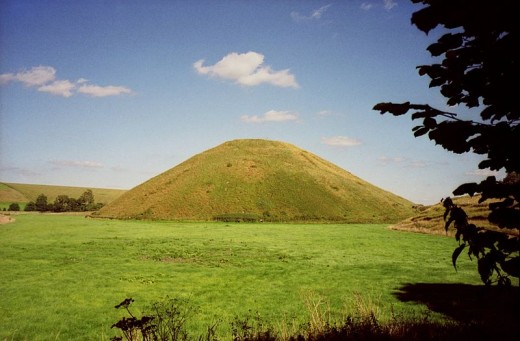
I'm 100% convinced that it was ALL to do with the cosmos, the heavens, the zodiac. The key to Silbury Hill AND Stonehenge is the same as ALL OTHER mysterious things our prehistoric ancestors did - increasing the 'influence' and 'potency' of 'heavenly' forces upon the Earth, and 'hard-wiring' the circuitry for future generations (us) so that the 'heavenly-plan' of the gods may more easily manifest within humanity, and spiritual evolution be assured. Sounds like a load of mumbo jumbo, dunnit?
Some people believe that serendipity has been the chief factor in the intellectual/moral/scientific advancement of mankind. But the synchronizing, step-by-step way that 'civilization' and intellectual evolution has proceeded through history in a naturally unfolding pattern - is no accident. It was 'meant' to be that way. Our ancestors were in cahoots with the gods, the heavens, the zodiac and everything. The enigmatic constructions within the British Landscape are the sign and the evidence of that.
Wheel in the Weald
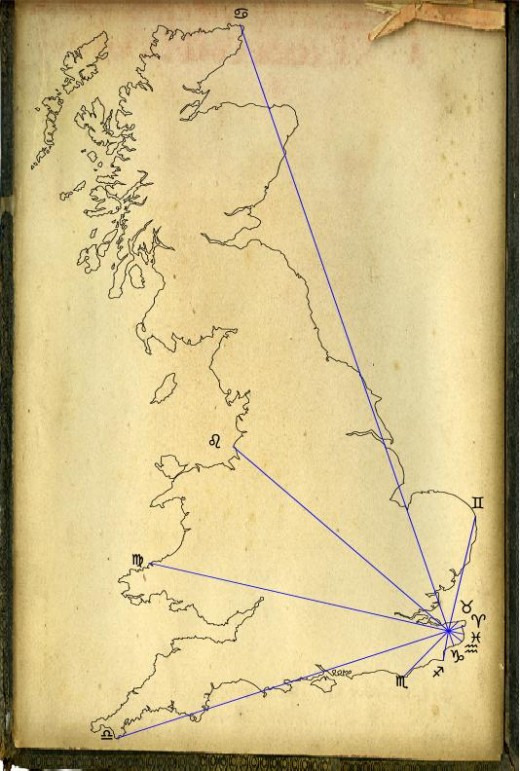
I'm going to attempt to demonstrate how this zodiac in the land works.... and while I'm at it I'm going to stay in synch with the astrological moment - as I write this it's 13th - 19th October 2011, the Sun is in Libra . I've drawn a diagram or two to show you what this means in terms of this landscape zodiac.
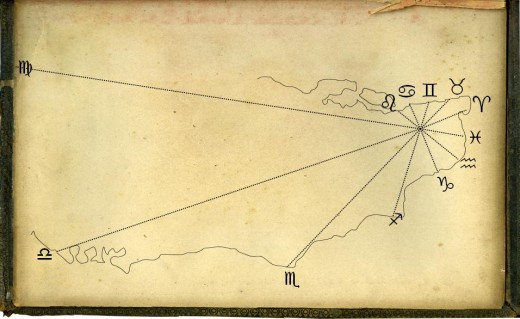
Libra - The Devices
From Canterbury's spindle the alignment goes true-West all the way to Lizard Point, the country's most south-western extreme. The Libran segment of this Landscape Zodiac encompasses the entire West Country, a zone that includes Stonehenge.
But before we go as far as that though we'll have a quick look relatively close to the Abbey - one of Libra's concerns is pledges, oaths and contracts. That's why I thought it worth my while mentioning this. One of the most famous 'pledges' or contracts in English history was the Magna Carta, the 'Great Charter,' in modern-ese. It was signed at Runnymead in Surrey well within this Libran segment of the wheel, and is on display in Winchester Cathedral, also firmly in the zone. On the face of it the Great Charter is all about justice and fairness - and these are Libran principles. Closer to the Abbey in Kent are the villages of Brasted Chart, Great Chart and Chartham. 'Chart' is a charter. 'Bras' is brass. So, Brasted Chart means brass charter; Great Chart is a great charter and Chartham is a charter. Definitely of the Libran 'contracts' motif. Runnymead - the name - is a 'sign' of the Libran kind. The first syllable in Runnymead is 'run,' and that's a rune - an inscribed stone, a magically potent symbol- a type of device.
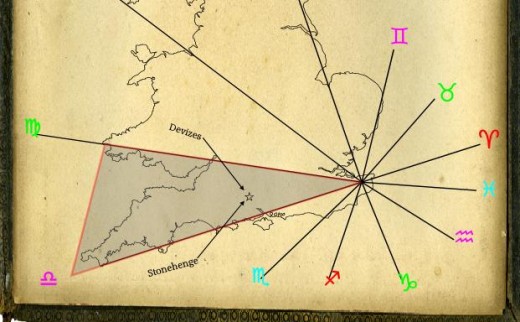
the Sign's Symbols
- Aries -- the Ram
- Taurus -- the Bull
- Gemini-- the Twins
- Cancer-- the crab
- Leo-- the lion
- Virgo -- the cereal goddess
- Libra-- the devices or scales
- Scorpio -- the scorpion/lizard/eagle
- Sagittarius -- the arrow
- Capricorn-- the goat
- Aquarius -- the water bearer
- Pisces-- the fishes
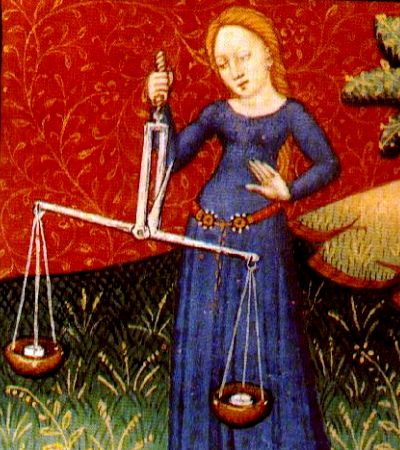
Wedding Ring
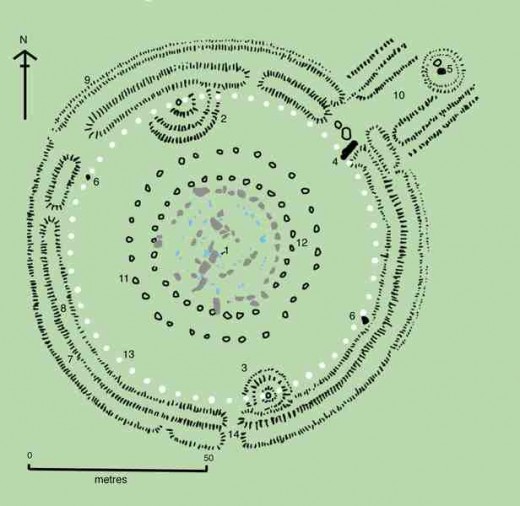
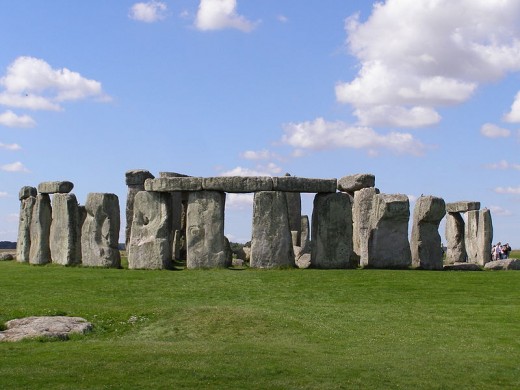
The Device
Of course, that's relevant. Libra is symbolised by a pair of scales - the only sign in the zodiac that is represented by a man-made object - a device. Another name for Libra is the devices. How coincidental then, innit, that here in what my diagrams show is the Libran portion of Great Britain we find what is perhaps the most famous device in world-history - Stonehenge. Not only that, there's a town a few miles from the henge, in this same Libran sector called Devizes - don't be fooled by the 'z,' it still means the same thing - devices.
Among the several principles governed by this 'partnership' sign of the zodiac, 'balance' stands out as a pre-condition. The scales as a symbol express that idea more eloquently than I'm capable of. So, how do these Libran principles of 'balance' and 'partnership' relate to Stonehenge?
It's easy innit....
Stonehenge tracks and computes the short and long cycles of the luminaries - the Sun and Moon - as well as the planets, as they appear to rise, set and conjoin in the skies above England. One of the major cycles of considerable importance to the astronomer-priests who designed this device, is the 18 years 11 days Saros Cycle - used for predicting the times at which eclipses of Sun and Moon occur. When the Sun (male) and the Moon (female) eclipse they are, in the priestly/druidic faculties of knowing, getting 'married,' 'wed.' This device on Salisbury Plain told the priests the precise month, week, day, hour and minute when the Sun and Moon would meet in their marriage bed in the heavens......
Related to this marriage motif is this tickly little notion.... if Stonehenge is a device that records the repeated marriages or matings of the divine female and the divine male - the Sun and Moon - could Stonehenge then be the archetypal model of the wedding ring? It's just a thought....
Sil, Sel, Seld
So, Silbury Hill, just a few miles from the henge, must fit into the Libran pattern too, yeah? - if I'm right about this landscape zodiac, that is. Because, according to my understanding, everything within a particular 'sign' of this thing - was put there to enhance and augment the flow of cosmic forces, similar to Feng Shui. You rearrange the environment for a more harmonious, beneficial flow of qi. Feng Shui translates as "wind-water" in English. In China Feng shui was used to orient spiritually significant piles such as tombs and other structures, in an "auspicious" manner.
I can't help but insist that the ancient Britons were clearly, seasoned practitioners of this art. Apparently Fung Shui originated in about 4000 BC on the other side of the globe... yet the ancient Brits were evidentially making these hills and stone circles, alignments etc about the same time.... for the same reasons... Seems to me there was a globally shared knowledge.
So.... how would this man-made mountain, Silbury Hill, fit into and enhance Libra's pattern?
Well.... I know that some of you are not going to like this very much .... but my symbol-oriented imagination goes.... Libra...scales... weights. Ha! it's a weight in a pan of scales. You think it must be more than that? More than a symbol? Well.... I've gotta stick with it. I say that our ancestors believed in this landscape zodiac so much that they were prepared to go to almost any length to do what they considered their 'sacred duty.' This was 'God's work,' and they were Gods helpers. That's the way I see it. I'm pretty sure it was how they saw it too.
Some say the hill got its name because King Sil was buried inside, mounted on a golden horse. But they've looked for this mythological king and that gold..... but he ain't there. Never was. Someone invented him to account for the hill's name...
I've seen that before.
So.... in our ancient tongue the nearest word(s) I can discover to 'Sil' are Sel, Selda, Sellan and Selan. Sellan is appropriate, as it means to swear, make an oath, and make a promise. Libra is the sign of oaths and vows, partnerships and marriage.
Also appropriate is the related word Selda, a comrade - comrades are equal partners, and that's Libra to a 't.'
The closest word to Sil though is Sel - a superlative. It seems to describe the hill itself, as well as some of the attributes our ancestors associated with it - and perhaps hoped to gain from it. Sel means great, excellent, good, clever and skilful.
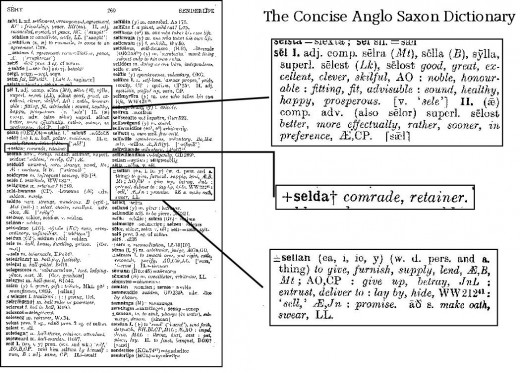
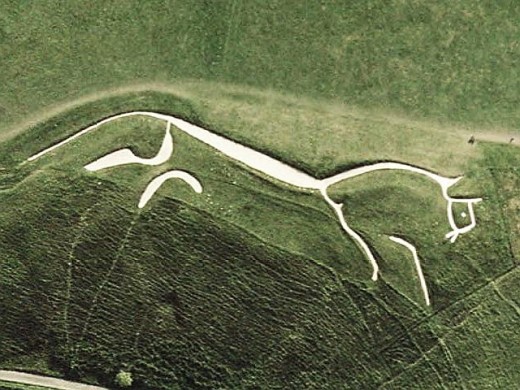
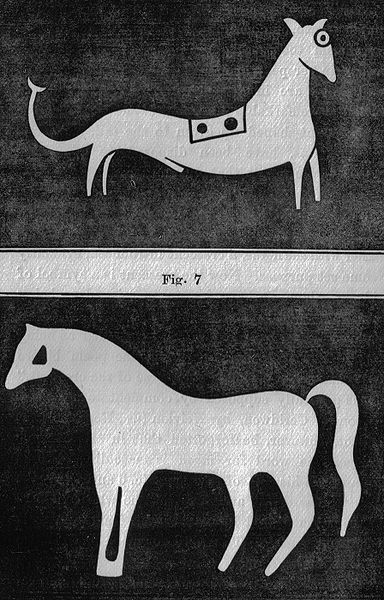
Also within this Libran Zone are a number of white horses cut into the chalk downs and hill-slopes - the ones pictured are the Westbury White Horses (lower image) and Uffington. I admit, it took me some time to work out the specifically "Libran" significance of horses. And whilst I agree that the explanation does seem a little convoluted.... I still think it's the right one - Libra is the zodiac sign associated with Autumnal Equinox, its opposite sign Aries being the Vernal or Spring Equinox. Orthodox astrologers say that the word Equinox means equal (equi) night (nox)..... I agree, one meaning of the word Equinox IS equal night. But there's more than one meaning......equus of equinox also means horse... so now we add 'nox,' meaning night and we are left with a night-mare. I believe the night-mare or night-horse to be a symbol representing the Moon. I say this partly because the ancient Brits depicted the 'gods' (Sun and Moon) as horses.
In support, I quote the Roman explorer, Tacitus.
... they judge it altogether (North European tribes) unsuitable to hold the Gods enclosed within walls, or to represent them under any human likeness. ....
But to this nation it is peculiar, to learn presages and admonitions divine from horses also. These are nourished by the State in the sacred woods and groves, all milk-white and employed in no earthly labour.
is it really nought but coincidence that Libra governs this region of England (according to my diagram etc) and equines are depicted large all-over the landscape here?
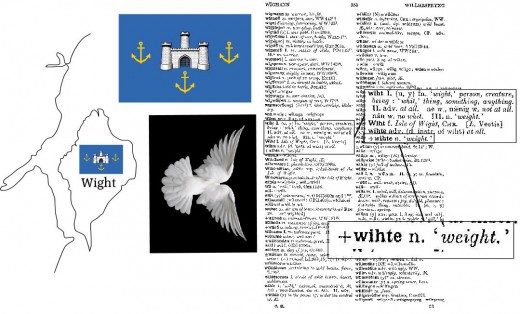
The Isle Of Wight is in the border zone between the signs, and has the characteristics of both signs clearly etched all over - and in - it. But right now we're looking for Libran traits and signs, so we'll focus on those. It's easier here than most other places, you just need to look in the right book.... In Anglo-Saxon 'wight' translates as a weight. I've pasted another page from the Anglo Saxon dictionary hereby, with big square boxes magnifying the bits I want you to see. Just so you know I'm not making any of this up. The so-called Beaker People named the island Veho, meaning ‘raised above the sea,’ or ‘what rises.’ A weight and something that rises... we are talking about scales and weights here....
The outline of the Isle Of Wight is, to my mind, Kinda dove-like - the dove is one of Libra's symbols. Quite Libran too is the island's emblem, consisting mostly of three anchors... and what are anchors? Weights, no less.
How about the name of the town Weymouth? It's obvious what these formerly meaningless familiar place-names mean when you keep the Libran pattern-set in mind. Wey = weigh, as in weigh anchor. A retired battle-ship was scuttled off the coast of Weymouth to help create a reef - the reason I'm interested is because of the name of the ship. It is The *Scilla- the scales! How about that...?
*Anglo Saxon: Sciell = scale.
Chun Quoit, Cornwall
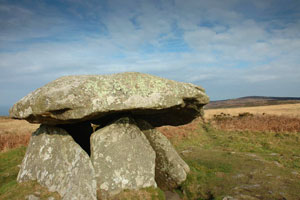
Lanyon Quoit, Cornwall
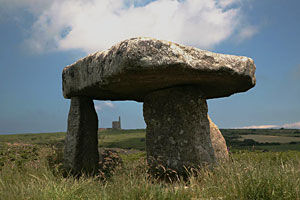
Some of the landscape furniture down in Cornwall does nothing at all to diminish my faith in this crazed idea - does everything to affirm and further convince me that this Landscape Zodiac is real. I mean, what about those Quoits? Odd, ain't they? Cornwall is the only county where ancient man thought it appropriate to place these.... items of landscape furniture. No one has yet come-up with a convincing case describing what these things are. But, when you know that the entire Nation is divided-up into twelve zodiacal regions, then these bizarre neolithic structures make oodles of sense, don't they? We're in the region of Libra, and these things are 'balancing-acts,' aren't they? I don't think I need to tell you what they mean.
Lizard Point the mainland extreme of the Libra alignment is both in Libra AND Scorpio. I've drawn another diagram (below) to show why. The influence of the neighbouring signs 'blend' with each other close to the dividing 'cusp' line or alignment. My diagram attempts to depict how the Libra influence 'blends' with Scorpio's, Libra's symbol appears in Scorpio's zone, and visa versa.
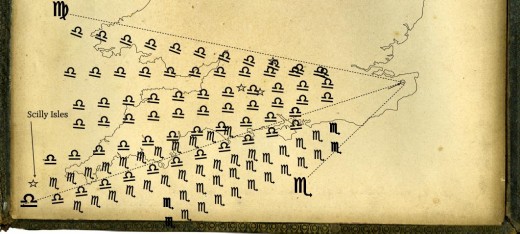
Lacertilia", from Ernst Haeckel's Kunstformen der Natur, 1904
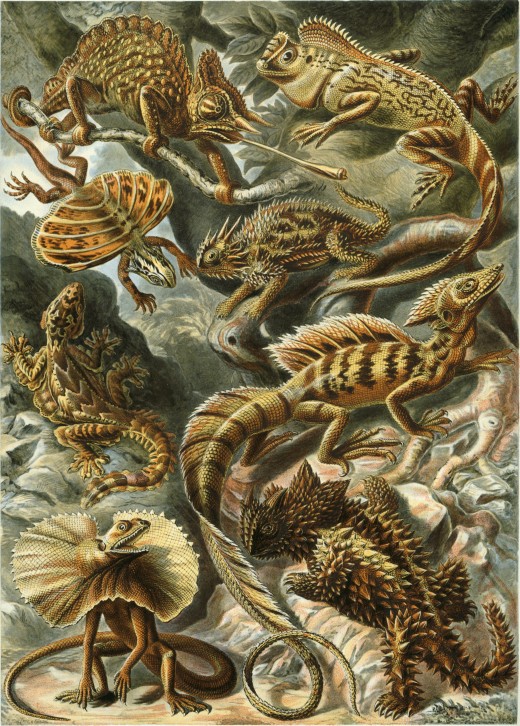
So, why is a lizard an appropriate creature to represent Libra?
Well, in fact, lizards reflect both of the signs Libra and Scorpio, as I'll try and explain. The lizard is Libra in quality because Libra rules two opposite states - there are two pans. In one pan is yin and in the other is yang - hot (Sun) in one and cold (Moon) in the other; male in one, female in the other. The lizard is a creature with two natures - sits on a rock in the sun - as cold and still as a statue, until heat from the Sun 'soaks-in' and suddenly - whoosh, springs to life like greased lightning. And of course, lizards have scales.
But then the lizard is also one of the three bona-fide totem animals of Scorpio- the other two being the scorpion and the eagle- each one more evolved than the other. The lizard is a cold blooded creature and so is the scorpion, and they both have remarkable tails- the lizard's comes off in an emergency and grows back later while the scorpion's arched-upwards tail bears the sting of death.
River 7
The River Severn displays typically Libran characteristic... extremes. It has the highest tidal-range of any river in Britain- the Severn Bore is a huge surfing-wave that funnels up the river in one direction, then, when the tide turns, surges back down-river in the opposite direction. The tide rises as much as 50 feet- I think that it's more likely to have been- in the ancestor's minds at least- 49 feet, or Severn times Severn.
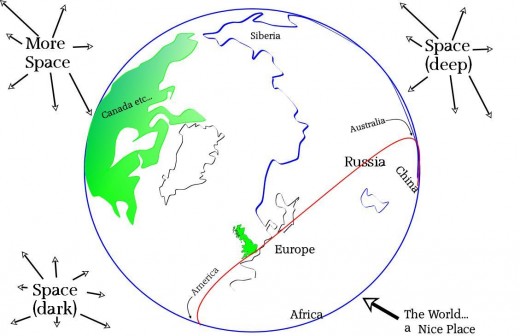
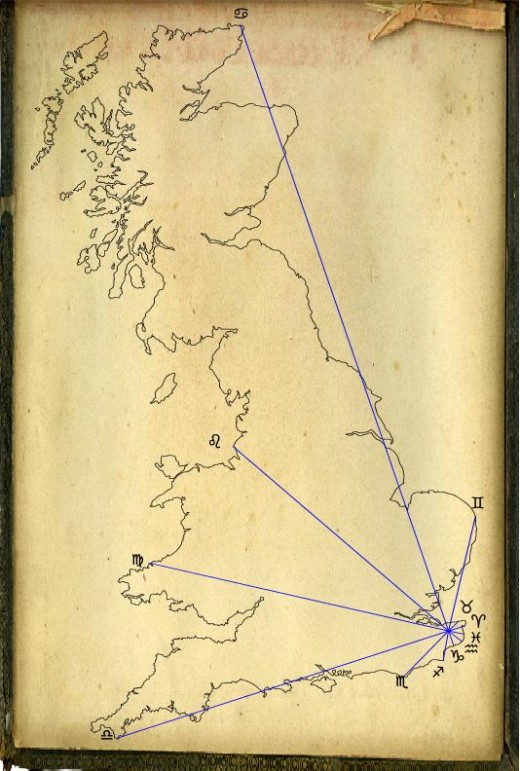
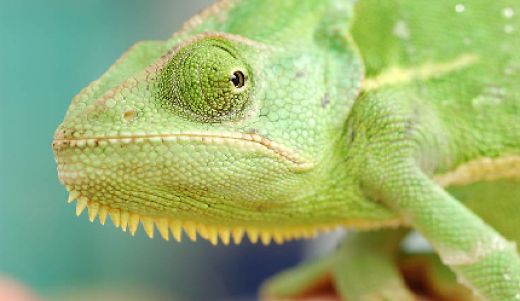
In the old days Libra and Scorpio were thought of as one constellation - one sign. Libra was called 'the claws of the scorpion,' so, to my eye the forked-end of the Cornish Peninsula is a pretty-good landscape representation of those claws....
The entire Cornish peninsula is made of a very hard type of volcanic rock, an 'ophiolite' by the name of serpentine- forged in the fiery-depths of the ancient earth - the underworld. The 'serpent' is a lizard in old-think, both being well-known representation of the devil - embodiment of the principle of evil - in one of Libra's scale-pans. St Michael, England's own dragon-slayer, is name-checked on his mount (equus) at St Michael's Mount, in between the calipers of Libra, the open-claws of the Lizard.
Good and evil are opposite qualities that are represented by- and 'weighed' in Libra's scales - they, and Libra, represents contracts, vows and oaths - the legal system. That's why the forked-end of western England - Lands End on one side and The Lizard on the other - (seven miles between them), are so perfectly Libran. Before the English language was in general use around here, the locals spoke a unique lingo known as Cornish Gaelic. Back then The Lizard was called Lys Arth.... The prefix 'Lys' is court, and suffix 'Arth' is high. It means High-Court...
The entire West Country is covered in place-names that relate to opposing principles as represented by the scales of Libra. Yin and yang, sinner and saint.
The Cornish were a law unto themselves. Launceston was the furthest into Cornwall that- historically- police-men would go. Further west than that and they might never come back to Launceston again. It was marked on the old maps as Dunheved, ‘dune-hefe,’ in Anglo-Saxon; ‘dune’ is downward, down; and ‘Hefe’ is a weight, a burden. Together they mean to put down a weight.
As I keep saying, it's only the zodiacal overlay on the map that can make any sense of these place-names. Ignoring the cosmos and the Libran influence is to shut the eyes to reality - reality as understood by the people who named these places in the first place.
In parts one and two I mentioned that the sign under scrutiny there, Cancer the crab, had a certain metal associated with it - all the signs do. It was silver for that sign. In this sign, Libra, ruled by the planet Venus, the specific metal is copper. Should I bother with details about the history of copper mining in Cornwall? The county is like a cheese, riddled with copper and tin mines.
On the matter of devices - in the nineteenth century a young mining engineer called Trevithic improved an existing, very inefficient steam-engine from the coal-fields 'oop north so it would burn less coal. Then it could be used in his copper mine in Cornwall to pump water out of the mine. So what? Well, it's the design of the 'device' I'm getting at- take a look yourself- it's even got a libran name- the 'beam' engine. And I must say that the engine sucks water from the lowest places and raises them up to the highest.
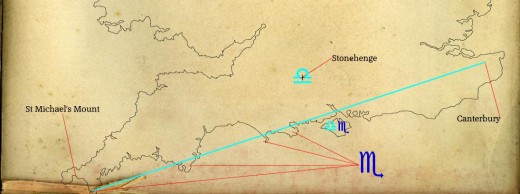
Libran Device (a model)
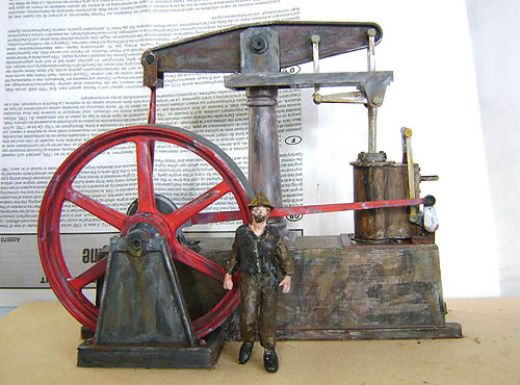
Michael and the Serpent
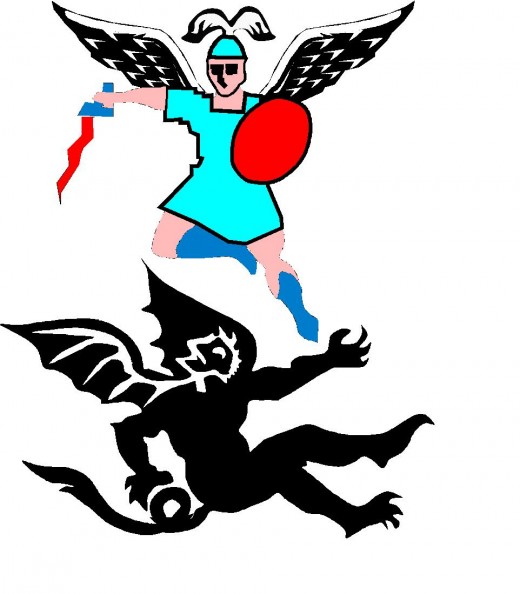
The most southerly town in the mainland is called Sennen, which means, believe it or not, sin,and sinning. The most westerly, in opposite Lands End, is Penzance, meaning holy head, in Cornish Gaelic. Take out the 'z' from Penzance and you have an ecclesiastic term for balancing the karmic scales - penance.These town at the extremes of the land, are on opposite peninsulas and they are named after opposite principles. A sinner and a saint; good and evil. The civic regalia in Penzance has John The Baptist's head on a plate. So the towns name in English, Holy Head is referencing the decapitation of John. You'll remember how this same 'motif' appeared on the Cancerian alignment (part two)? There it was related to the Summer Solstice (in Cancer) and the beginning of the Sun's 'fall' toward Autumnal Equinox. So here in Libra at the Autumnal Equinox itself we see the theme reappearing. When the Sun crosses the equator heading south after the Autumnal Equinox, our ancestors imagined that 'God' (the Sun/Son) was sojourning into the underworld. When the sky turned red in the evening hours - the hours ruled by Libra, they knew it was his blood smearing the sky. He was slaughtered every evening, and went down to his grave in a pool of his own blood - but reborn (resurrected) in the morning covered in the blood of his birth - a miracle! This God of the ancients could perform many wonders - proved to them on a daily and yearly basis.
There's the town of Zennor, meaning, in Anglish, sinner, and in Somerset there's Yeovilmeaning simply ye evil. the opposing principle is stated at Truro, ‘Tru’ is a pledge, promise, a covenant; ‘the truth, true, and the suffix ''Ro' is an old name for the cross. It means The True Cross.
In Somerset, near Wick, Bridgewater is the hamlet of Oath, and just down the lane is its neighbouring settlement, False. Both are listed as 'lost villages,' deserted during the middle ages due to plague, economic strangulation, or something worse. These hamlets are in the parish of Stathe, which is a 'Staef,' a document. How very Libran.
There's several places in Cornwall named after Saint Pirran - one of the first Christians brave enough to come to Cornwall to try and convert them - devil worshipers. Christian monks or priests were not too well received around these parts. St Piran is the patron saint of Cornwall - he arrived here at Pirran-Port in a coracle with no oars- to spread the good word. But the locals were not at all impressed with him - grabbed him, tied him to a mill-stone and dropped him off the harbour-wall into the sea. But Libran-style miracle of miracles! The stone - with Pirran still tied to it - floated. Now THAT did impress the locals and they were all converted on the spot. It's the weights thing and the rising thing - pure Libra.
As I mentioned before, these alignments don't actually stop when the coastline stops. As you'll remember, the Cancerian alignment (parts 1 & 2) hit the northern-most tip of the mainland, and then shot across the Straights Of Stroma to the Orkneys, whizzed off north toGreenland(which I referred to as Iceland hum ho...) then ever north wards, across Northern Canada and Bingo... accidentally found the magnetic North Pole!
Well, wouldn't you know it...? This western alignment does the self-same trick (except it hits no pole).... pesky, troublesome alignments these..... never know where to stop.
First stop after leaping off The Lizard is the Scilly Isles. What a silly-sounding name that is,Scilly. Well, no matter, this archipelago fits the Libra pattern in quite interesting ways, as all things do when you know what the pattern is. Libra is the 7th sign of the zodiac and 'governs' the 7th hour of the afternoon, the evening. The Scilly's are 49 Miles from the Lizard - that's 7 x 7... and there are 7 islets - and in Anglo Saxon 'sciel,' the closest word to Scilly, means, (as well as shell).... scale! What are the chances of that, eh? It's no wonder I 'believe' in this Landscape Zodiac, when things like that turn up.
You might want to argue the point and say that the type of 'scale' intended by the dictionary is scale as in: lime-scale.... but I gotta say that, in English (and its precursor Anglo Saxon), it's thecontext that decides the meaning, innit? So, in the context of the zodiac and Libra 'scale' is exactly appropriate.
On Scilly Isle St Martin's, the only pub is called The Seven Stones.These stones might refer to the islands themselves or some ancient standing stones on the island, but may equally be referring to the seven magical gem-stones or the seven deadly sins and their counterpart virtues. Libran concerns you might say?
Vice_______ Virtue
Lust............Chastity
Gluttony.....Temperance
Greed.........Charity
Sloth...........Diligence
Wrath..........Forgiveness
Envy........... Kindness
Pride...........Humility
St Agnes is the name of one of the isles, St Agnes being the patron saint of engaged couples, very Libran, eh?
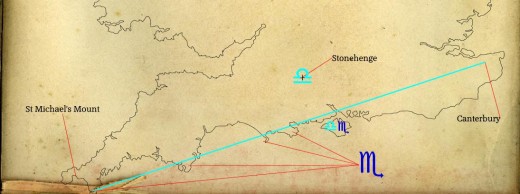
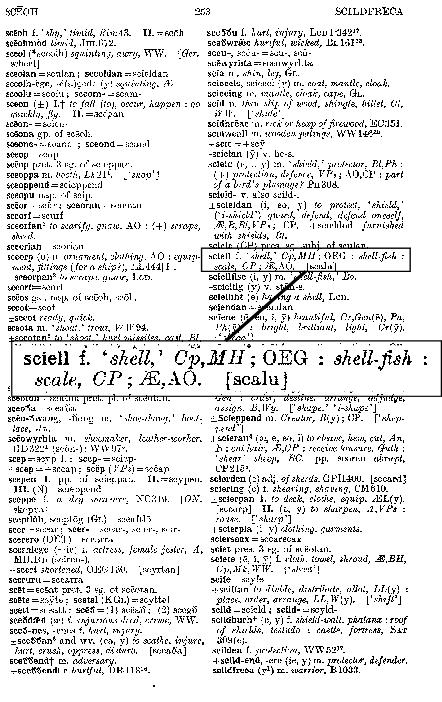
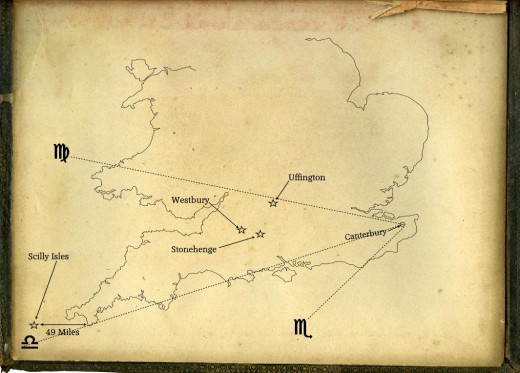
So.... where does that Libran alignment go to, after it's left the Scillies... and which nation does Libra 'define,' if any? Hum ho... think of Libra's themes: Justice; Polarisation (rich/poor; black/white; male/female; north/south; east/west); Scales... yes, you got it.
Our Libran alignment - starting in Canterbury and leaving at Lizard Point, flies like a dove west, west, west, and hits.... the continent of America. The region includes the Florida Pan Handle... pans... and handles....
Liberty Libra
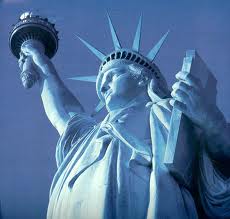
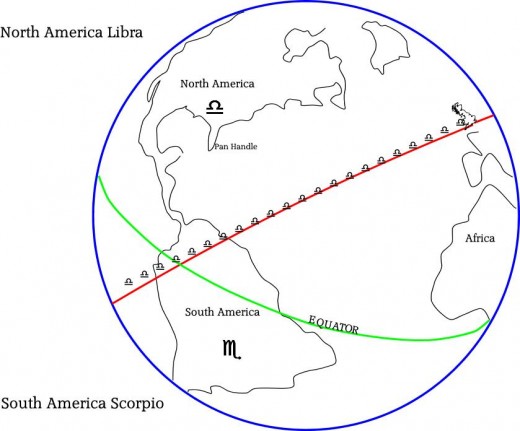
According to this new map of the world wot I dun, South America is in Scorpio, and USA is Libra. As I mentioned earlier on, Libra used to be known as 'the claws of the Scorpion,' and.... seeing as how South America looks remarkably like a huge scorpion with outstretched claws, threatening USA, sort of thing, it seems so... appropriate. A closer look at the right claw reveals it to be the island-chain of the Bahamas and it looks an awful lot like a scorpion. And, like when you think about Scorpio's various motifs.... halloween, the underworld, evil, death, sex etc, etc, then, finding Haiti (Haiti brings 'voodoo' and 'zombies' to mind.) and Cuba here is just so.... appropriate. There's no other word for it, really.
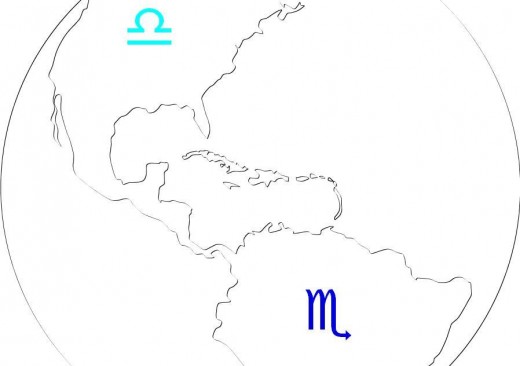
Scorpionic Island Chain
